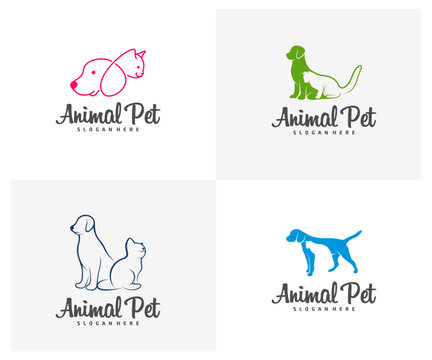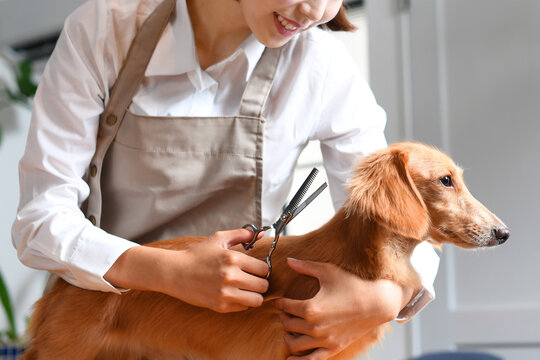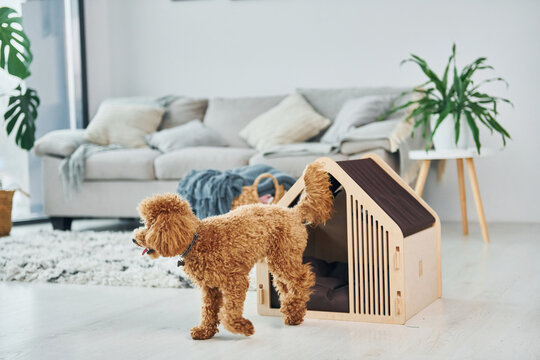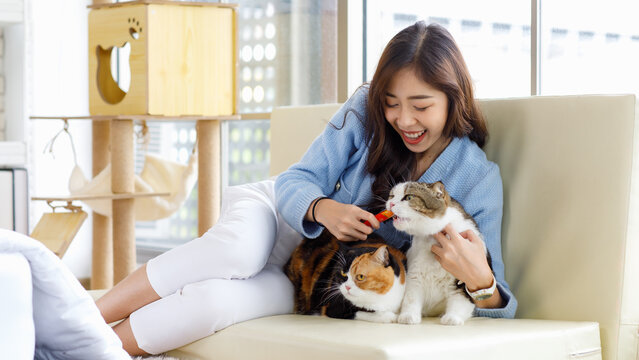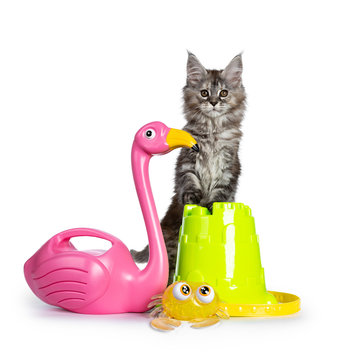Keeping pets at home is a popular choice for many households. Whether you’re considering adopting a new pet or you already have one, it’s essential to understand the importance of proper care and maintenance. In this comprehensive guide, we’ll provide you with everything you need to know about keeping pets at home, including choosing the right indoor pet, indoor pet care and maintenance, home pet safety, pet-friendly living, legal and financial responsibilities of pet ownership, special considerations for keeping specific types of pets at home, and more. So, if you’re ready to learn how to provide your furry, feathered, or finned friends with a safe and happy home, keep reading.
Introduction
Keeping pets at home is a popular practice among pet lovers. It involves having domesticated animals as companions in a residential setting, ranging from cats and dogs to birds and fish. The practice of keeping pets at home has been around for centuries and provides many benefits to the pet owner, including companionship and stress relief.
However, owning a pet comes with a great deal of responsibility. Proper care and maintenance are essential to ensure the health and happiness of the pet. In this guide, we will provide you with all the information you need to provide proper care and maintenance to your indoor pet. We’ll cover everything from choosing the right indoor pet to legal and financial responsibilities of pet ownership. Whether you’re a first-time pet owner or a seasoned pro, this guide will help you provide the best possible care for your furry, feathered, or scaly friend. Let’s get started!
Choosing the Right Indoor Pet
Choosing the right indoor pet is a crucial decision that requires careful consideration. Several factors should be taken into account when selecting an indoor pet, including your lifestyle, living situation, and the amount of time you can devote to your pet.
Factors to Consider When Choosing an Indoor Pet
1. Lifestyle
Your lifestyle plays a crucial role in determining the type of indoor pet that’s right for you. If you have an active lifestyle, consider getting a dog that requires daily exercise and attention. On the other hand, if you prefer a more laidback lifestyle, a cat or bird might be a better fit.
2. Living Situation
Your living situation is another critical factor to consider when choosing an indoor pet. If you live in a small apartment, you may want to consider getting a small dog or cat instead of a large dog. Additionally, some rental properties may not allow pets or have restrictions on the type and size of pets allowed.
3. The Amount of Time You Can Devote to Your Pet
The amount of time you can devote to your pet is also an essential consideration. Some pets require more attention and care than others. Dogs, for instance, require daily exercise and attention, while cats are more independent and can be left alone for longer periods of time.
Types of Indoor Pets Suitable for Different Lifestyles
1. Dogs
Dogs are loyal and affectionate companions that require daily exercise and attention. They’re ideal for people who have an active lifestyle and enjoy spending time outdoors. Some popular indoor dog breeds include the French Bulldog, Boston Terrier, and Shih Tzu.
2. Cats
Cats are independent and low-maintenance pets that are suitable for people with a more laidback lifestyle. They’re affectionate and playful and can provide excellent companionship for people who live alone. Some popular indoor cat breeds include the Siamese, Persian, and Maine Coon.
3. Birds
Birds are intelligent and social pets that require regular interaction and attention. They’re ideal for people who enjoy the company of animals but don’t have the time or space for a larger pet. Some popular indoor bird species include the Parakeet, Cockatiel, and Lovebird.
Benefits of Adopting Pets from Shelters
Adopting a pet from a shelter is an excellent way to give a loving home to an animal in need. Shelters offer a wide range of pets to choose from, and the adoption fees are often lower than purchasing from a breeder. Additionally, adopting a pet from a shelter helps reduce the number of animals in shelters and supports the efforts of animal welfare organizations.
In conclusion, choosing the right indoor pet is a decision that requires careful consideration of several factors. By considering your lifestyle, living situation, and the amount of time you can devote to your pet, you can select an indoor pet that’s right for you. Additionally, adopting a pet from a shelter is an excellent way to provide a loving home to an animal in need.
Indoor Pet Care and Maintenance
To ensure the health and happiness of your indoor pet, proper care and maintenance are essential. Here are some tips on how to care for your indoor pet:
Feeding and Nutrition for Indoor Pets
The type and amount of food that your indoor pet needs will depend on its species, breed, size, and age. Consult with your veterinarian to determine the best diet for your pet. It’s also important to provide fresh water for your pet at all times. Clean your pet’s water bowl daily to ensure it remains free of bacteria and other contaminants.
Grooming and Hygiene Tips for Indoor Pets
Regular grooming and hygiene are important for the health and well-being of your indoor pet. This includes brushing your pet’s fur, trimming its nails, and cleaning its ears and teeth. The frequency of grooming will depend on your pet’s breed and coat type. Consult with your veterinarian or a professional groomer to determine the best grooming routine for your pet.
Training and Exercise for Indoor Pets
Training and exercise are important for the physical and mental health of your indoor pet. Dogs require daily exercise and training to stay healthy and happy, while cats benefit from playtime and mental stimulation. Training should include basic obedience commands such as sit, stay, and come. Additionally, training should focus on socialization to ensure your pet is comfortable around other animals and humans.
Tips for Socializing Indoor Pets
Socialization is important for the well-being of your indoor pet. This includes exposing your pet to different people, animals, and environments. Socialization should begin at a young age and should be ongoing throughout your pet’s life. To socialize your pet, take it on walks, introduce it to new people and animals, and provide opportunities for play and interaction with other pets.
Health and Medical Care for Indoor Pets
Regular check-ups with your veterinarian are important to ensure the health and well-being of your indoor pet. Your veterinarian can provide important preventive care, such as vaccinations and parasite prevention. They can also diagnose and treat any health issues that may arise. If you notice any changes in your pet’s behavior or health, seek medical attention promptly.
Environmental Enrichment for Indoor Pets
Indoor pets may become bored or stressed if they do not have access to environmental enrichment. This can lead to behavior problems and health issues. Provide your indoor pet with toys, scratching posts, and climbing structures to keep them mentally stimulated. Additionally, provide your pet with a comfortable and safe living environment.
In conclusion, caring for your indoor pet involves proper feeding and nutrition, grooming and hygiene, training and exercise, socialization, health and medical care, and environmental enrichment. By following the tips outlined in this section, you can provide your indoor pet with the care and attention they need to thrive.
Home Pet Safety
Ensuring that your indoor pet lives in a safe environment is crucial for their health and well-being. Here are some essential tips to create a safe living environment for your pet:
Identify and Eliminate Potential Hazards
Identifying potential hazards in your home is the first step in creating a safe living environment for your indoor pet. Common household hazards include toxic plants, electrical cords, cleaning products, and small objects that can be swallowed. Keep these items out of reach of your pet to prevent accidents and injury.
Also, keep your indoor pet away from areas that can pose a risk, such as balconies, windows, and stairs. Install pet gates to prevent access to these areas.
Emergency Preparedness for Pet Owners
Being prepared for emergencies that may affect your indoor pet is essential. Here are some tips to help you prepare:
- Have a first aid kit on hand that includes items such as gauze, bandages, antiseptic, and a thermometer.
- Know the location of emergency veterinary clinics in your area. Keep their contact information and directions in an easily accessible location.
- Have a plan in place in case of a natural disaster, such as a hurricane or earthquake. This plan should include a list of pet-friendly shelters, evacuation routes, and a supply of food, water, and medication for your pet.
Taking these steps will help you be prepared in case of an emergency and ensure that your indoor pet stays safe and healthy.
Pet-Friendly Living
Creating a pet-friendly living environment is crucial for the health and happiness of your indoor pet. Here are some tips to help you create a pet-friendly home:
Choosing Pet-Friendly Furniture and Decor
When choosing furniture and decor for your home, consider the needs of your indoor pet. Choose furniture that is easy to clean and durable. Leather or vinyl upholstery is an excellent option as it can be wiped down quickly. Avoid materials like silk, velvet, and chenille that can be easily damaged by pets.
Provide your pet with a designated space for sleeping and relaxing. A comfortable bed or a crate can be a great option for dogs and cats. Cats also enjoy perches and scratching posts.
Dealing with Pet Odors and Messes
Indoor pets can sometimes cause odors and messes in your home. To prevent this, clean up messes promptly and use pet-friendly cleaning products to eliminate odors. Avoid using harsh chemicals that can be harmful to pets.
It’s also important to wash your pet’s bedding, toys, and other belongings regularly. This can help keep your home smelling fresh and clean.
Tips for Traveling with Your Pet
If you plan to travel with your indoor pet, it’s essential to plan ahead. This includes researching pet-friendly hotels and accommodations, ensuring your pet is up-to-date on vaccinations and health checks, and providing your pet with a comfortable and safe travel carrier.
To reduce stress during travel, bring along familiar items like your pet’s bed and toys. It’s also a good idea to feed your pet a light meal a few hours before the trip and to provide them with plenty of water during the journey.
In conclusion, creating a pet-friendly living environment involves choosing pet-friendly furniture and decor, dealing with pet odors and messes, and traveling safely with your pets. By following the tips outlined in this section, you can create a comfortable and happy home for your indoor pets.
Legal and Financial Responsibilities of Pet Ownership
Owning a pet comes with legal and financial responsibilities that every pet owner should be aware of. This section covers everything you need to know about the legal and financial aspects of pet ownership.
Licensing and Registration Requirements for Pet Owners
Many states and cities require pet owners to license and register their pets. This helps to ensure that pets are up-to-date on vaccinations and that they can be reunited with their owners if they become lost. Licensing and registration fees vary depending on the state and city, but they are usually affordable. Keep in mind that failing to license and register your pet can result in fines and legal consequences.
Costs Associated with Pet Ownership
Pet ownership can be expensive. In addition to the cost of food and supplies, pet owners may also be responsible for veterinary bills, grooming costs, and other expenses. It’s essential to be prepared for these costs before bringing a pet into your home. The cost of pet ownership can vary depending on your pet’s species, breed, age, and health status. It’s important to budget accordingly and to be aware of any potential costs associated with pet ownership.
Pet Insurance and Financing Options
Pet insurance can help to offset the cost of veterinary bills and other expenses associated with pet ownership. Pet insurance plans vary in coverage and cost, so it’s essential to research different options and choose a plan that meets your pet’s needs and your budget. Additionally, some pet stores and veterinarians offer financing options to help pet owners manage the cost of pet ownership. These financing options can be helpful in emergencies or unexpected expenses.
In conclusion, being a responsible pet owner involves being aware of the legal and financial responsibilities that come with pet ownership. By understanding licensing and registration requirements, the costs associated with pet ownership, and the availability of pet insurance and financing options, you can ensure that you are prepared to provide your pet with the care and attention they deserve.
Pros and Cons of Keeping Pets at Home
If you’re considering bringing a pet into your home, it’s essential to weigh the pros and cons. Here are some potential benefits and drawbacks to consider:
Pros:
Companionship and Emotional Support
Pets can provide their owners with companionship and emotional support. They can be great sources of comfort, especially during tough times. Pets can also help reduce feelings of loneliness and depression.
Improved Mental Health and Reduced Stress
Studies have shown that pets can improve their owners’ mental health by reducing stress and anxiety. Pets can also help lower blood pressure and improve overall cardiovascular health.
Opportunities for Physical Activity and Exercise
Pets can provide their owners with opportunities for physical activity and exercise. Walking a dog or playing with a cat can help owners stay active and maintain a healthy lifestyle.
Increased Socialization and Community Involvement
Owning a pet can also provide opportunities for socialization and community involvement. For example, dog owners may meet other dog owners at the dog park, and cat owners may join online forums or social media groups to connect with other cat owners.
Teach Children Responsibility and Empathy
Owning a pet can also teach children responsibility and empathy. Children can learn how to care for another living being and develop a sense of empathy and compassion.
Cons:
Financial Costs Associated with Pet Ownership
Pet ownership can be expensive. In addition to the initial cost of purchasing or adopting a pet, owners must also consider ongoing costs such as food, grooming, and medical care.
Time Commitment Required for Proper Care and Maintenance
Proper care and maintenance of a pet requires a significant time commitment. Owners must be prepared to provide their pets with daily care, including feeding, exercising, and cleaning.
Potential for Allergies or Other Health Concerns
Pets can also pose health risks to their owners. Some people may be allergic to pet dander, while others may develop health concerns from exposure to pet waste or parasites.
Risk of Damage to Property or Belongings
Pets can also cause damage to property or belongings. For example, dogs may chew on furniture or dig up the yard, while cats may scratch on walls or carpets.
Restrictions on Travel and Other Activities
Pet ownership can also limit owners’ ability to travel or participate in certain activities. Owners must make arrangements for their pets while they are away and may have to forego certain activities that are not pet-friendly.
In conclusion, owning a pet can be a rewarding experience, but it’s essential to consider both the pros and cons before making a decision. By weighing the potential benefits and drawbacks, you can make an informed decision about whether pet ownership is right for you.
Special Considerations for Keeping Specific Types of Pets at Home
Different pets require unique care in order to thrive, and each species has its own specific needs. In this section, we’ll discuss the special considerations for keeping cats, dogs, birds, and fish at home.
Keeping Cats at Home
Cats are independent creatures that require minimal supervision, but they still need proper care to live a healthy and happy life. Here are some special considerations to keep in mind when keeping cats at home:
- Provide your cat with a clean litter box. Cats are clean animals, and they need a clean place to do their business.
- Give your cat a scratching post to satisfy their natural urge to scratch. This will also help prevent them from scratching furniture or other household items.
- Provide your cat with toys to keep them mentally stimulated. Cats are natural hunters, and toys that allow them to chase and pounce can help keep them happy and healthy.
Keeping Dogs at Home
Dogs are social animals that require daily exercise and socialization to stay healthy and happy. Here are some special considerations to keep in mind when keeping dogs at home:
- Housebreaking is an essential part of keeping dogs at home. Proper housebreaking involves using positive reinforcement to teach your dog where and when to go potty.
- Crate training can also be beneficial for dogs, especially when they are young or when you need to leave them home alone. A crate can provide a safe and secure space for your dog to relax and rest.
- Socialization is crucial for dogs to learn how to interact with other animals and humans. Expose your dog to different people, animals, and environments to help them become well-adjusted.
Keeping Birds at Home
Birds require a clean and safe living environment, a balanced diet, and mental stimulation. Here are some special considerations to keep in mind when keeping birds at home:
- Provide your bird with a spacious cage that allows them to move freely. The cage should also be kept clean to prevent the buildup of bacteria and other harmful substances.
- Birds need perches of different sizes and materials to keep their feet healthy. Avoid using sandpaper-covered perches, as they can be harmful to birds’ feet.
- Toys can help keep birds mentally stimulated. Offer your bird toys that allow them to climb, swing, and chew.
Keeping Fish at Home
Fish require a clean and well-maintained tank, proper water quality, and a suitable diet. Here are some special considerations to keep in mind when keeping fish at home:
- Choose the right type of fish for indoor living. Some fish are better suited for indoor living than others, and it’s important to choose a species that is appropriate for your tank size and water conditions.
- Provide your fish with a balanced diet that meets their nutritional needs. Overfeeding can lead to health problems, so it’s important to feed your fish the right amount of food.
- Keep your tank clean and well-maintained. This includes regularly changing the water, monitoring the water quality, and cleaning the tank and filters as needed.
By following these special considerations, you can ensure that your pets are happy, healthy, and well-cared for.
Conclusion
In conclusion, keeping pets at home requires responsible and loving care. We hope this ultimate guide has provided you with valuable information on how to provide proper care and maintenance to your indoor pet.
Remember to choose the right indoor pet for your lifestyle and living situation. Proper nutrition, grooming and hygiene, training and exercise, and socialization are crucial to your indoor pet’s health and well-being. Ensure that your indoor pet lives in a safe and hazard-free environment, and be prepared for emergencies.
At our shop, we offer a wide range of pet products and accessories that can help you provide the best care for your indoor pet. Visit us today to learn more about our products and how we can help you keep your pet happy and healthy.
Questions & Answers
Who can keep pets at home?
Anyone who can provide proper care and attention to their pets can keep them at home.
What pets are suitable for small apartments?
Small dogs or cats are suitable for small apartments, as long as they get enough exercise and attention.
How often should I groom my indoor pet?
The frequency of grooming depends on your pet’s breed and coat type. Consult with a groomer or vet for the best routine.
What if my rental property doesn’t allow pets?
Look for pet-friendly rental properties or consider talking to your landlord to see if an exception can be made.
How can I reduce pet odor in my home?
Clean up messes promptly, wash your pet’s belongings regularly, and use pet-friendly cleaning products to eliminate odors.
What if I can’t afford the cost of pet ownership?
Consider adopting from a shelter, which often has lower fees, or look into pet insurance or financing options.
